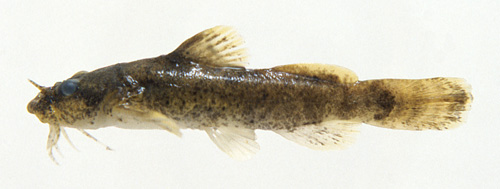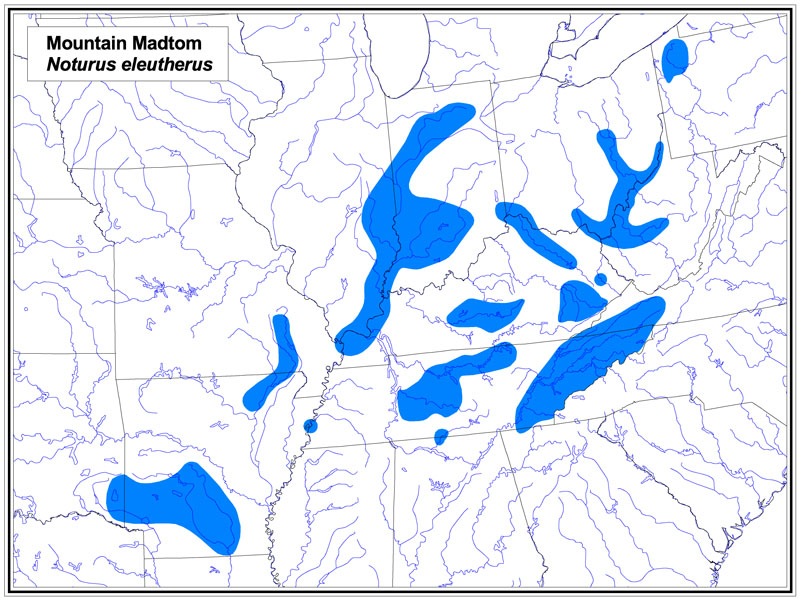
Adult female from Current R., Randolph Co., AR
45 mm SL, Collected 17-August 1979, INHS 27397
MOUNTAIN MADTOM
Noturus eleutherus Jordan 1877
Identification: The Mountain Madtom has a stout body with a deep caudal peduncle. The body is brown or gray with dark mottling above and light below with no dark specks on the belly. There usually are 4 vague saddles; the 1st saddle begins at the dorsal spine. The fins have dark bands or mottling. The adipose fin is high and has an irregular dark band usually confined to the lower half. The caudal fin has a dark brown bar at the base and another near the clear edge. The pectoral spine is long with 6-10 large teeth on the rear edge and large teeth on the front edge. The caudal fin is straight and nearly free from the adipose fin. The anal fin has 12-16 rays. To 5 in. (13 cm) total length.
Range: The Mountain Madtom is found in the Ohio River basin from northwestern Pennsylvania to eastern Illinois, and south to northern Alabama and Georgia; in the White and St. Francis River systems, Missouri and Arkansas; the Mississippi River in western Tennessee; the Ouachita River system of Arkansas; and the Red River system of Arkansas and Oklahoma. This is a locally common species.
Habitat: The Mountain Madtom inhabits vegetated areas or woody debris in or near rocky riffles and runs of small to large rivers.
Similar species: The Northern Madtom, Noturus stigmosus, a dark crescent-shaped band in the middle of the caudal fin, 2 large spots in front of the dorsal fin, and the dark band on the adipose fin extends into the upper half of the fin. The Neosho Madtom, Noturus placidus, has small teeth on the front of the pectoral spine, white lower caudal rays, and a dark crescent-shaped band in the middle of the caudal fin. The Elegant Madtom, N. elegans, and Saddled Madtom, N. fasciatus, have a more slender body, bolder color pattern, and the adipose fin broadly joined to the caudal fin.
